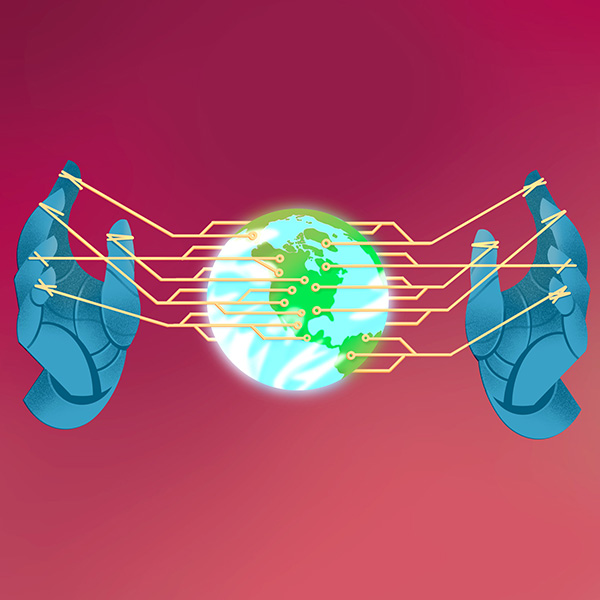The popular Borderlands video game series is an irreverent shoot ‘em up known for gut busting humour and gut blasting weaponry in a sci-fi universe. Thanks to Borderlands Science, a new mini-game included in Borderlands 3, players can now help scientists learn more about the human gut microbiome.
Specifically, players are incentivized to align the DNA sequences of gut bacteria in exchange for in-game goodies, with each completed puzzle bringing researchers at McGill, Massively Multiplayer Online Science (MMOS) and the Microsetta Initiative at UC San Diego’s School of Medicine potentially one step closer to understanding the trillions of helpful and hurtful microbes – each with their own DNA signature – that exist in our guts.
Foreign microbes make up more than half the cells in the human body, so being able to sequence their DNA could have wide ranging implications for the future of human health, including potential treatments for many illnesses.
So why outsource this important information gathering to humans playing a game instead of utilizing a powerful algorithm capable of computing infinite amounts of data?
“It’s very easy nowadays to sequence the DNA of a single organism, but if you take one DNA that doesn’t tell you much,” says Jérôme Waldispühl, associate professor of computer science and a researcher in computational molecular biology. “We have an algorithm, but unfortunately it’s not perfect. We have too many sequences to find solutions for.”
Because the algorithm attempts to “correct” similar sequences to make them uniform, human ingenuity is actually a better tool for figuring out how each sequence is different and how they relate to each other.
“We need scientists to manually correct the mistakes the computer makes, but we can’t do that at the scale of the sequences we’re receiving. But if instead of two or 10 scientists we have millions of players, then maybe it becomes a possibility,” Waldispühl explains. Hence the partnership with Borderlands, one of the world’s all-time best-selling video game franchises.
The Borderlands Science game within a game – which features a voice cameo from neuroscientist and Big Bang Theory star Mayim Bialik – looks similar to Tetris, but instead of matching falling shapes, players are moving colour coordinated bricks that serve as nucleotides. Players are then tasked to make rows of bricks by colour, and when it’s not possible, it means the player has landed on a mistake made by the algorithm.
“The mistakes the computer makes aren’t huge. Sometimes it’s one brick to reveal a pattern, an important nucleotide that wasn’t spotted by the computer in the first place,” Waldispühl says, explaining the game’s deceptive simplicity.
“In the end, the goal is to release an algorithm that learns from the players how to better align the microbe sequences.”
Borderlands players are considered to be some of the most loyal and fanatical in gaming, and so far, they’ve taken to this scientific challenge with enthusiasm. Game developer Gearbox Software said within the first four hours of release, there were over a million puzzles solved. In a week, over 20 million puzzles were solved.
As a comparison point, pioneering citizen science game Phylo DNA Puzzles, which Waldispühl also worked on, resulted in two million puzzles solved in a decade.
“The interactions we’ve had with players online so far, they’re asking a lot of interesting and pertinent questions,” says Waldispühl. “They’re digging into the science. They want to know what it all means. They’re even researching on their own and coming back with more questions.”
Borderlands Science was made over the course of a year at Gearbox’s Quebec City studio by Gabriel Richard, who was also a lead designer on Borderlands 3.“There was a worry that if we simplified it too much, we would lose the scientific integrity of the game, but if we wanted to push too much the scientific aspects, it could make the game impossible to understand. There was a lot of back and forth discussion,” says Waldispühl. “What I wasn’t expecting was that it would be [this much] fun. It was the first time in history a scientific task was put into a AAA game (the video game equivalent of a blockbuster film). It felt like the vision of 10 years ago finally became a reality.”
The data generated by players is packaged by Massively Multiplayer Online Science and shipped to McGill researchers for analysis.
Because the Borderlands Science collaboration has proven to be so productive, researchers are thinking about future partnerships and other ways to gamify scientific concepts.
“I think this is the way to go,” says Waldispühl. “If we want to make citizen science happen, it has to be done with video games and video game companies, because they have the experience with reaching people on a large scale. Putting scientific tasks in video games lowers the barrier of entry for everyone. It’s important to bring science to people instead of waiting for people to become interested in science.”


